
It was a giddy Tuesday morning at NASA'S Goddard Space Flight Center in Greenbelt, Maryland. At one point NASA Administrator Bill Nelson even joked that the mood was more akin to a pep rally than a stuffy scientific press conference.
Yet the joy was not misplaced. Long-awaited images produced by the groundbreaking James Webb Space Telescope were finally going to be revealed to the public. The five images ran the astronomical gamut: one was an image of some of the oldest and most distant objects in the universe; another was not a literal image, but observational data revealing the composition of the atmosphere of a planet in an alien solar system around 1000 light-years away.
Nelson commented that President Joe Biden and Vice President Kamala Harris had asked to see the pictures in advance, and met in secrecy in the White House to do so.
They were "like kids," Nelson recalled. Another host commented that they "geeked out."
With characteristic optimism, Nelson ended the rally by promising that visits to the Moon and Mars were next on NASA's itinerary. It is unclear if the agency can back up that bravado; the history of American space exploration has contained many unfulfilled promises and disappointments.
Yet at least on Tuesday — with the revelation that the James Webb Space Telescope had abundantly succeeded in its mission — NASA could at least say, on this occasion: Mission accomplished.
Want more health and science stories in your inbox? Subscribe to Salon's weekly newsletter The Vulgar Scientist.
These are the five images that were revealed, and what each one means for humanity.
1. SMACS 0723
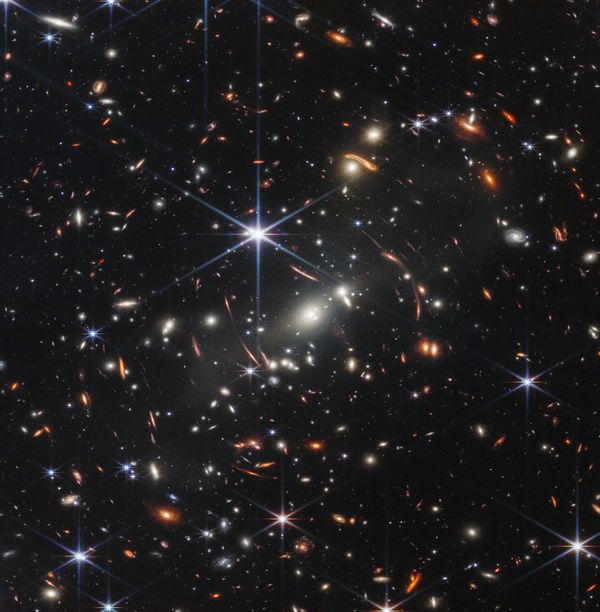
"This image covers a patch of sky approximately the size of a grain of sand held at arm's length. It's just a tiny sliver of the vast universe," Nelson explained in a statement. Another host commented that the telescope was so powerful, the scientists could not find a single spot where there was mere blank sky: "It's teeming with galaxies!"
One of the selling points of the James Webb Space Telescope is that it can detect infrared light — historically, the most difficult part of the electromagnetic spectrum for astronomers to observe. Indeed, from Earth's surface, infrared astronomy is virtually impossible because of all the infrared light generated on Earth from heat, and which is scattered in the atmosphere. Only in the darkness of space can a telescope like James Webb detect infrared light. That incredible ability allows for the space telescope to take images like this one, which would be impossible with even the largest ground-based telescope.
If you look carefully at the image, you will see white galaxies that were formed roughly around the time that the Earth and Sun were also being formed. Some galaxies look stretched and pulled because they've been distorted by gravity from black holes or supermassive galaxies with black holes at their center, as Einstein famously predicted.
2. The Southern Ring Nebula
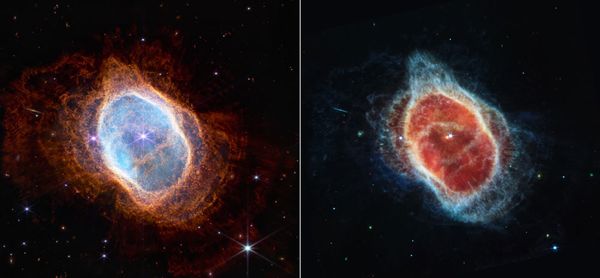
The image is false-color, and depending on whether you're looking at it with near-infrared light versus mid-infrared light, the image has been colored to appear more blue or red respectively.
The hosts also noted an "eager egg," a narrow filament near the top of the nebula that is radially aligned and appears to be blue in the near-infrared image. One astronomer had initially insisted it was nothing remarkable; others speculated that it could be an edge-on galaxy, or a disk galaxy that appears at high angles to the line of sight. The doubting astronomer lost the bet; it was, indeed, an edge-on galaxy.
3. Stephan's quintet
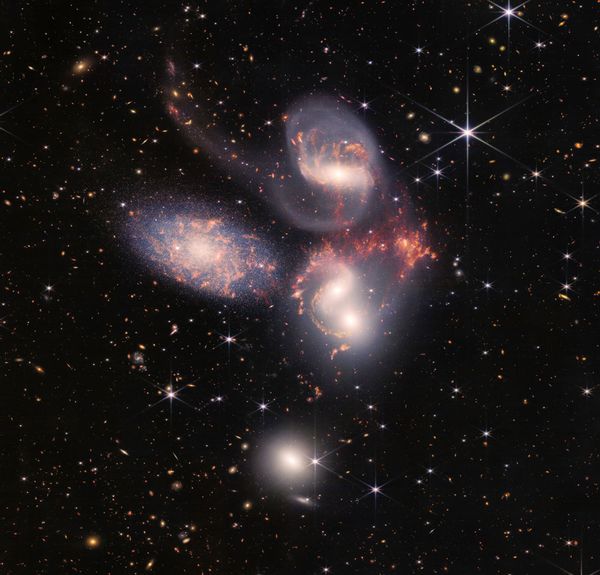
"The image also shows outflows driven by a black hole in Stephan's Quintet in a level of detail never seen before," NASA officials said.
4. Carina Nebula
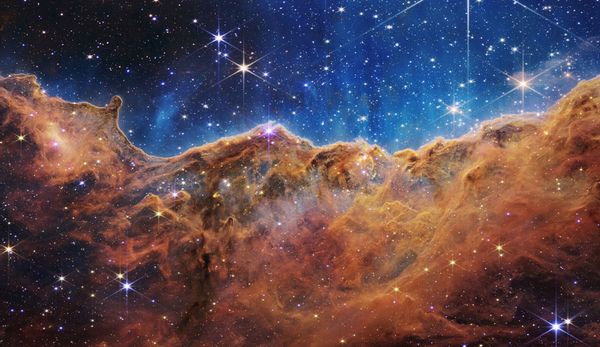
Except this is no ordinary view. Only 7,500 light years away from Earth, and located in our own Milky Way galaxy, the Carina Nebula has beguiled scientists for generations. This new image reveals, with unprecedented clarity, individual stars and emerging stellar nurseries that had not previously been seen.
"These observations of NGC 3324 will shed light on the process of star formation. Star birth propagates over time, triggered by the expansion of the eroding cavity," NASA writes. "As the bright, ionized rim moves into the nebula, it slowly pushes into the gas and dust. If the rim encounters any unstable material, the increased pressure will trigger the material to collapse and form new stars."
5. WASP-96 b (spectrum)
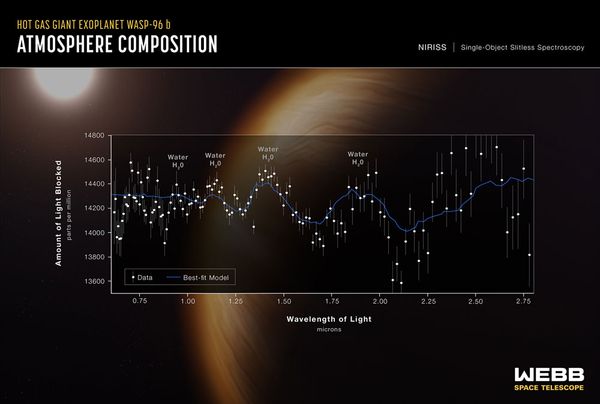
"Researchers will be able to use the spectrum to measure the amount of water vapor in the atmosphere, constrain the abundance of various elements like carbon and oxygen, and estimate the temperature of the atmosphere with depth," NASA writes. "They can then use this information to make inferences about the overall make-up of the planet, as well as how, when, and where it formed."
Read more
on astronomy:
- Why scientists think we could find extraterrestrial intelligence by searching for pollutants
- Hubble's enormous, ambitious successor is poised to change our understanding of the universe
- The Hubble telescope turns 32: Here are some of its greatest hits







